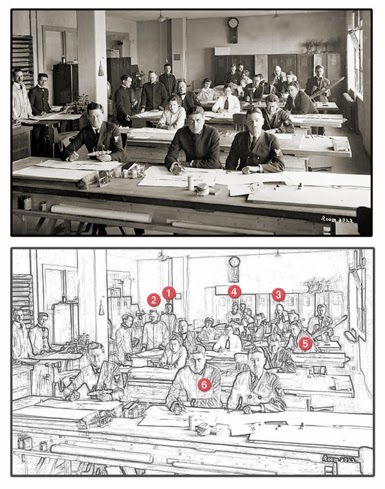 |
| Pershing Inspecting Artillery Camouflage (c1918) |
Reproduced above is a somewhat later photograph, in which Pershing and Baker are again inspecting camouflage, this time in the form of a large artillery piece that has been painted in abstract high contrast disruptive designs. The photograph may have been taken in France, where it was published in Le Miroir on April 7, 1918.
It was an order from Pershing in 1917 (widely published at the time in American newspapers) that called for volunteers to enlist as camouflage experts, called camoufleurs. But later, when camouflage units were actually formed, he appears to have grown less convinced of their worth. In particular, there is the following story about Pershing and camouflage in a World War 1 memoir by artist-writer and US Army camoufleur Henry Berry, in Make the Kaiser Dance (Garden City: Double Day, 1978), pp. 210-211—
[Arriving unannounced to inspect the troops, US Commanding General John J. Pershing] goes up and down our lines, shaking his head. I guess we weren't military enough for him. When he reached me [the company's camouflage expert], he really seemed appalled, particularly when he saw the sketchbook. "What do you have there, Corporal?" "Oh, it's just my sketchbook." "Sketchbook, sketchbook," he thundered, "what the hell do you think this is, an art school? You're in the United States Army, soldier. Give me that sketchbook." Then he handed it over to the lieutenant. I never saw it again.
In fairness to Pershing, Corporal Berry also says, a few pages earlier (p. 206)—
None of us, including the captain, knew a goddamn thing about camouflage, but it got us out of all the drilling and what have you.
On a separate occasion, another US Army officer said in a moment of utter frustration—
Oh god, as if we didn't have enough trouble! They send us artists!
 |
| more info |













































